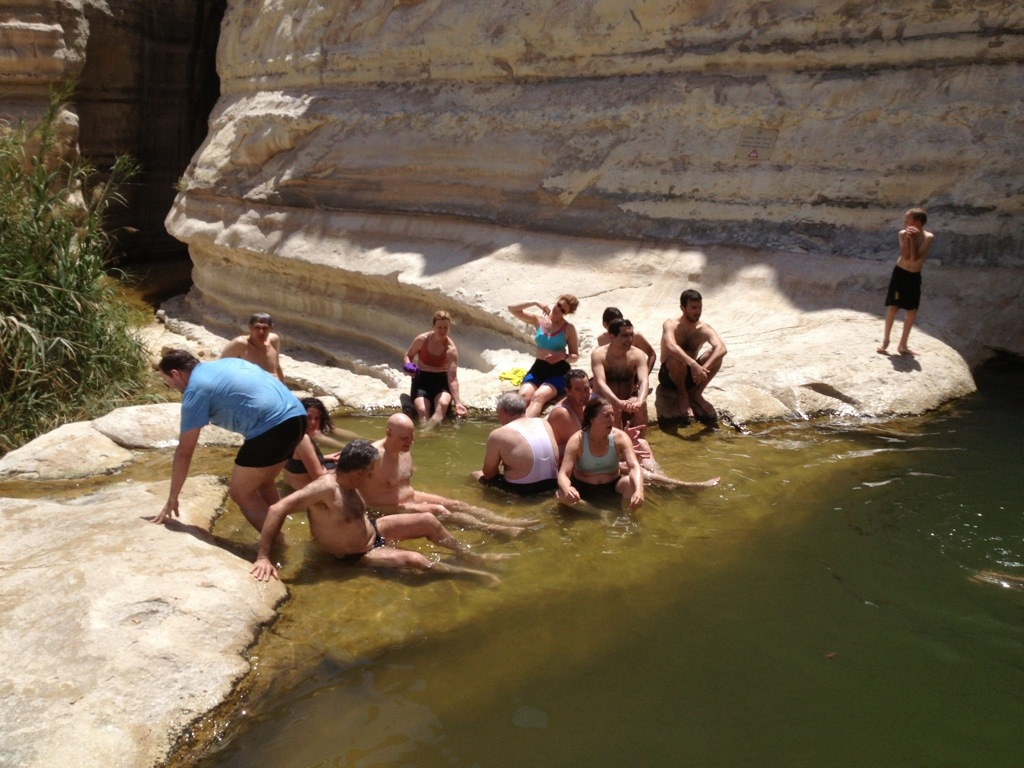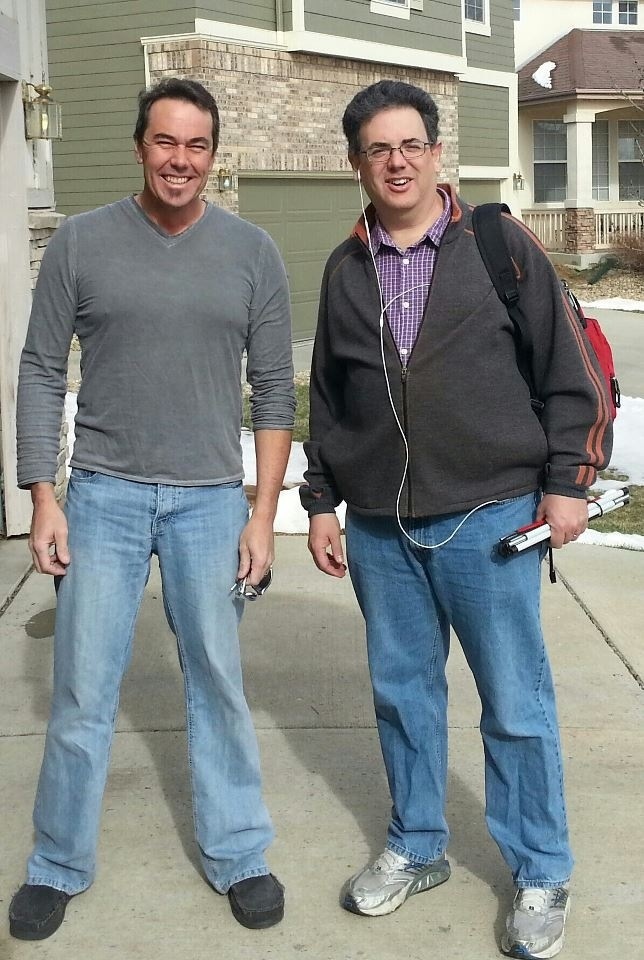Sunday may have been my best day of biking, ever. Giving my sit-bones a rest on Shabbat seemed to give me much more stamina in that, um, delicate department. There was also a lot of downhill, which let my legs rest quite a bit as well.
We got on the road at Israeli 6AM, which was actually about 6:15. The first order of business was to go from our hotel at the top of Makhtesh Ramon (a geological feature that is a little like a sinkhole with ambitions to be the Grand Canyon) straight to the bottom. It’s about a 1000 ft descent, with a few wide switchbacks, and we went down it like something quite fast indeed. Although it was pretty early in the morning, it was fairly warm already, and we had quite a bracing moment when we went through a thermocline near the bottom where there was a pocket of downright chilly air. Felt really good.
We emerged from the bowl of the makhtesh into the Southern Negev. Another descent gave us our first real mechanical issue of the ride. At 50mph, we were overtaking traffic, and Derek needed to ride the brakes pretty hard. By the time the road leveled, the rear disk brake was partially seized, and we had to wait for the mechanic, or we would not have been able to pedal much farther. We pulled up just before the Paran River crossing, which at this time of year does not involve anything remotely resembling water (although we were told it does run in the winter). Our surroundings reminded me a little of the Great Salt Flats in Utah, or the most desolate places in Nevada. Hot, dry, mostly flat, and nothing tall enough to provide even a little shade. One of the support wagons dropped off a tank of cold water, and we waited about 45 minutes for the mechanic (he had been dealing with other issues behind us).
Off we went, and despite the delay in the desert, I was feeling pretty good. And we rode, and rode, and rode, through a whole lot of moonscape. Eventually, we saw some cliffs in the far distance, and Derek said, “Hey, I think I just saw a rock slide.” We rode a little farther, and he corrected himself. “I think that was actually a tank shooting artillery at the cliff.” Yep, we were passing a military base, and they were in full training mode. We could ultimately hear the sound of shelling and the rat-tat of 50 mm guns. Never been that close to military exercises. Glad we weren’t down range.
Shortly, we came to our lunch stop at Neot Smadar. Before lunch, however, we were to have a tour of the place. A brief tour. Which took 2 hours. There was some grumbling. The tour guide was very earnest, but she really seemed to want us to understand the interpersonal dynamics that are key to the functioning of the kibbutz. It was a little hippie. Their very large central building, which included meeting rooms and art workshops and was pleasantly cooled by what amounted to a very low power swamp cooler, was interesting, but we spent a little too much time processing our reactions, if you will. Lunch, when we finally got it, was vegetarian, naturally. I think it was tasty, but we were a might peckish by that point, so my judgement may have been slightly impaired.
Finally, we headed off for our final destination of the day, Kibbutz Ketura. It wasn’t far from Neot Smadar, but there was a bit of climb to the rim of the Arava Valley. Here is where we fell off our second cliff of the day. The guides insisted we go one at a time, separated by 5 second intervals. Fast. Fun.
Ketura is an interesting place. One of the only (if not the only) old-style kibbutzim left. All funds are pooled among the members, including money from outside work. One reasong they can do this is that they are quite prosperous. They have a very large herd of dairy cows, grow a lot of dates, and, most economically important, they grow red algae which was initially used to produce food dye, then cosmetics, and now antioxidant food supplements (primarily for the Japanese market).
Dinner was our first meat meal not baked in an oven–a poolside bbq. Grilled meat, not covered in sauce. Good way to end a 65 mile day in the saddle.

